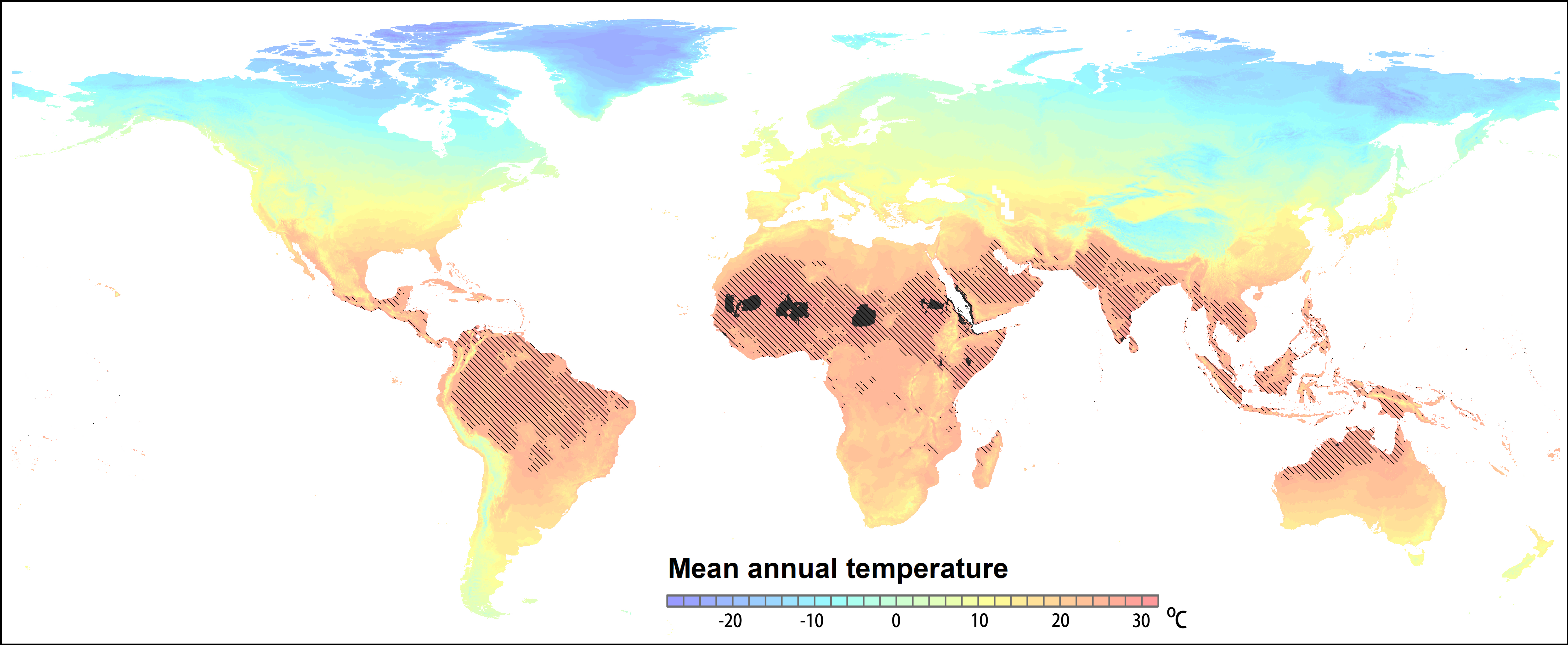The last few hundred years have been a bit of a tussle for man, first Copernicus moving Earth out of the center of the solar system, then Hubble, who put our solar system on the edge of an ever-expanding universe. More recently, COVID-19 showed our lack of power relationship to a piece of RNA 0.0009% the size of our genome. That being said, what is our niche, and how might it be changing?
Many parameters can define a niche, commonly we think of the urban-rural, first-third world, or high-low income, but one variable that covers them all is climate, more specifically, temperature. In the roughly 200,000 years that humans have roamed and explored the planet, it turns out that the temperature niche we occupy, certainly for the last 6,000 years has been relatively constant. We have filled areas with a modal temperature [1] of 52-55 F.
- While we have brought along our agriculture and civilization, soil fertility, and diversity of species, factors of productivity do not seem to drive our choice of climatic niche.
- Nor does precipitation, although we tend to avoid the arid places, e.g., deserts.
- This temperature-driven niche is only a small portion of the possible places we might inhabit.
- There is a second smaller modal niche, around 68 to 77 F, in the area of India
- Over time the niche has broadened, but not as much as you might imagine.
When the researchers overlaid population densities on these temperature maps, they found that humans were not evenly distributed throughout the niche. 30% of us live in that second smaller, hotter niche. And it is that uneven distribution that brings the researchers to their main question, what happens when the global temperature rises?
Intuitively you already know the answer. You need to look no further than to the actions of our “snowbirds,” migrating to Florida in the late fall to escape the North East’s colder winters and then flocking back as Florida’s temperature rises past those comfortable ’70-’80s into the hot, humid 90’s and more. The researchers considered several temperature increases using as their focal point in discussion a rise of 12 F globally.

Small, dark areas are current areas of population restriction, e.g, the Sahara, the shaded areas are those that potentially will change. Image courtesy of Chi Xu
Now before we begin to attack the model, ignore the numbers, and look at what happens. As we start to get warmer, some of our niches will reach temperatures that we prefer not to inhabit. And as it turns out, the first of those areas to be impacted are the niches where we have higher population density. While we could “shelter in place,” that seems unlikely given our 6,000-year history of where we like to be, so populations will begin to migrate to cooler climes. In some sense, we all move north. And the researchers are the first to point out that they cannot guarantee we will migrate, nor will their estimate 30% of the population, 3 billion individuals, necessarily hold.
They do offer three reasons why we might move. First, the majority of the world is fed by small, labor-intensive farming, and the intensity of that labor is increased with higher temperatures. Second, temperature exerts an effect on our mood and temperament – how often when we comment on the high temperature do we add ironically that it is a dry heat. Finally, and this may be a little too much chicken or egg dilemma, our economic productivity, at this point, seems to be found in the more temperate zones.
Stripped of all the distracting numbers here is their bottom line
“…our results suggest a strong tension between expected future population distributions and the future locations of climate conditions that have served humanity well over the past millennia.”
And here is the question that I would pose. Given our experience over the last two months with a pandemic, do we want to postpone planning for a changing climate, or do we want to begin mitigation now? Social distancing will take on a whole new meaning when climate changes; staying home is not necessarily the answer.
[1] The mode is the most frequent value, the temperature in this case, in a set of values
Source: Future of the Human Climate Niche PNAS DOI: 10.1073/pnas.1910114117




